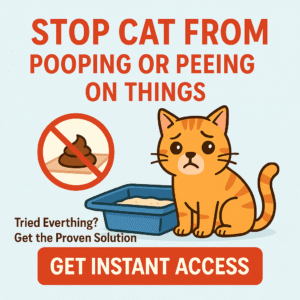Radioactive iodine (I-131) therapy is the gold standard for treating feline hyperthyroidism. While the hospital phase is short, your cat’s recovery continues at home. Many owners wonder: how will my cat behave after radioactive iodine treatment? What’s normal, and when should I worry? Understanding the process can help you create a calm, safe, and supportive environment for your recovering cat.
What Is Radioactive Iodine Treatment?
Radioactive iodine therapy is a minimally invasive, highly effective treatment for hyperthyroid cats. It involves a single injection of radioactive iodine (I-131), which destroys abnormal thyroid tissue without surgery or long-term medication. Most cats are hospitalized for 3–7 days to allow radiation levels to decrease to a safe range before being sent home.
Common Behavior Changes After Treatment
Every cat’s recovery is unique, but many experience some temporary changes after returning home. These may include:
- Lethargy or Sleepiness: Many cats are tired after hospitalization and treatment. It’s normal for them to sleep more and be less playful in the first few days.
- Increased Appetite or Hunger: As thyroid hormone levels normalize, cats may feel hungrier or even ravenous. This usually settles as their metabolism stabilizes.
- Weight Gain: With reduced metabolism, cats may start to regain lost weight, sometimes rapidly.
- Mild Digestive Changes: Occasional vomiting or changes in stool are possible as the body adjusts. Persistent issues should be discussed with your veterinarian.
- Behavioral Changes: Some cats become more relaxed, affectionate, or social as hyperthyroid symptoms resolve. Others may be timid or withdrawn for a short period, especially after time away from home.
- Increased Drinking and Urination: These symptoms should improve within weeks, but monitor for any ongoing excessive thirst or urination.
Managing Your Cat’s Behavior and Recovery at Home
To help your cat recover comfortably and safely after I-131 therapy:
- Limit Close Contact: For 1–2 weeks, follow your clinic’s instructions to limit prolonged cuddling, lap time, and sleeping in your bed. Keep young children and pregnant women away from the cat’s litter box and food bowls during this period.
- Provide a Quiet Space: Create a calm, stress-free area with their bed, litter box, food, and water. Allow your cat to adjust at their own pace.
- Resume Normal Routines: Keep mealtimes, play, and social interaction as normal as possible to help your cat settle in.
- Monitor Appetite and Weight: Track how much your cat is eating and drinking. Contact your vet if your cat stops eating, continues to lose weight, or gains too much weight too quickly.
- Follow Litter Box Safety: Use flushable or disposable litter if advised. Wear gloves and wash your hands after cleaning the box during the radiation safety period.
When to Call Your Veterinarian
Most cats experience a smooth recovery with minimal side effects. However, contact your veterinarian if you notice:
- Persistent vomiting or diarrhea
- Loss of appetite for more than 48 hours
- Severe lethargy, hiding, or behavior changes lasting more than a few days
- Difficulty urinating or defecating
- Signs of hypothyroidism (extreme lethargy, weakness, significant weight gain)
How Long Until My Cat’s Behavior Returns to Normal?
Most cats return to their usual behavior within 1–4 weeks after coming home. As thyroid hormone levels stabilize, you may notice positive changes—less anxiety, improved coat, normal appetite, and renewed energy. Some older cats may be slower to adjust but typically improve with patience and routine.
Frequently Asked Questions
Will my cat become more affectionate or less active after treatment?
Many owners notice that their cat becomes calmer, more affectionate, and less restless after hyperthyroid symptoms resolve. Your cat may sleep more and seek out your company, or need a little time to readjust. Both are normal.
Is it safe to let my cat outside after radioactive iodine treatment?
It’s best to keep your cat indoors for at least two weeks after treatment, both for their safety and to prevent environmental radiation exposure. Always follow your clinic’s recommendations.
How should I handle my cat’s litter box?
For 1–2 weeks after treatment, use flushable or disposable litter if possible. Wear gloves and wash hands thoroughly after scooping. Dispose of litter as directed by your veterinary clinic.
Conclusion
Radioactive iodine therapy offers a cure for most cats with hyperthyroidism. Some behavior changes and mild side effects are common during the recovery period, but most cats adjust quickly and enjoy a healthier, happier life. By providing a safe, supportive environment and following your vet’s advice, you can help your cat recover comfortably at home.
Have concerns about your cat’s recovery? Don’t hesitate to contact your veterinarian—they are your best resource for guidance and reassurance.
